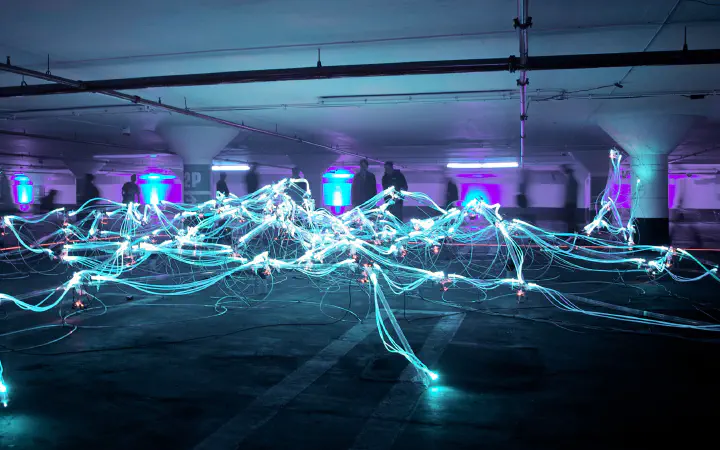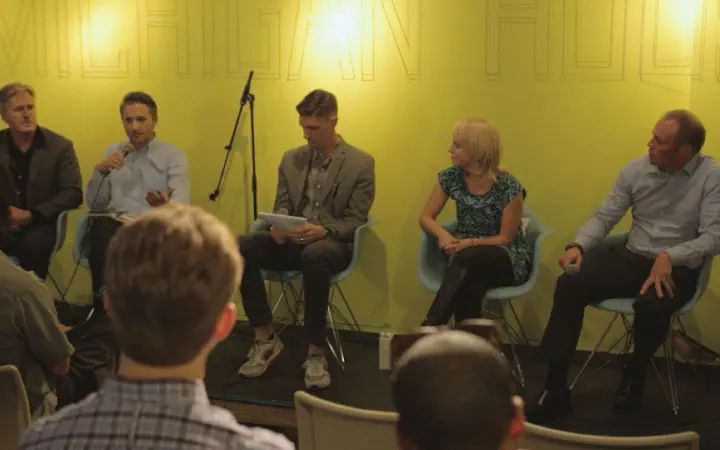
The culture of an organization can, in many ways, determine success or failure. We’ve seen examples of how the cultural acceptance of a nod leads to inefficiencies and ineffectiveness, and where a culture of customer service distinguishes an organization from the masses.
If you’re reading this, I’m guessing we have something in common. We place a premium on a culture that is collaborative, generative, innovative and inspiring. We place a premium on a creative culture.
We can do great things when we’re supported by a creative culture. Ideas mature into something far more inspiring and captivating. Teams have the freedom to explore and make mistakes, and we feel the deep satisfaction of shaping a brighter future together.
The future belongs to the creators.

I’ve been on a mission to discover what it means to support a thriving creative culture. I’ve worked within organizations that seem determined to squash creativity and organizations that actively protect the creative spirit. Over the years, I’ve picked up on four elements that support creative cultures. When it comes to cultures that ooze creative energy, you can do yourself no harm by ratcheting up these four attributes within your organization.
Candor
Ed Catmull, one of the founders of Pixar, describes candor in “Creativity Inc.,” the freedom and willingness to share insights, opinions and even criticism, as one of the hallmarks of a creative culture.
Creativity, in large part, is fueled by the collision of differing ideas and perspectives. Candor paves the way for ideas to collide. Lack of freedom or willingness to share ideas—even when they conflict with the prevailing winds—stifles creativity at best, and at worst, it sows seeds of resentment.
Candor isn’t, however, an excuse to be a jerk. Candor, to be effective, demands tact, kindness and humility. Creativity can take a nosedive when someone jumps into a conversation with their elbows out, leaving people feeling bruised and belittled. Candor isn’t an excuse to speak before you think.
Resource: Creativity Inc.
Whimsy
It took me several years to put my finger on this one, in part, because the business person in me doesn’t know what to do with it! Whimsy doesn’t surface in our design vocabulary very often, but I think it should.
Google defines whimsy as: playfully quaint or fanciful behavior or humor.
The first design team I had the privilege of serving with began to teach me the value of whimsy. Two of the designers in particular exhibited whimsy as a core part of what made them such talented creatives.
For example; Steve, one of the senior designers took it upon himself to draw a caricature of each of us to display on our cubical name tags. Why? Because it was fun, and at the same time, it humanized us a bit more to our colleagues.
They’re playful nature compelled them to reach for odd or unusual connections. They allowed themselves to follow the unusual path where their playfulness took them, which lead to countless creative breakthroughs.
Encouraging whimsy in the workplace gives people the freedom to make unusual connections. Whimsy pushes back against the fallacy that says that success is only for the serious.

We’re less likely to make creative leaps when we feel judged. In my experience, when there is a lack of whimsy, there is a clear presence of judgment.
Resource: Serious Play - Tim Brown

I’ll admit, I can be a little stuffy at times.
Optimism
Someone once told me that people and projects generally rise to their lowest level of expectation. When every new idea is met with criticism and reasons it won’t work, the creative energy within a person or project deflates like a punctured life raft.
Environments that focus on mitigating risk will often reward individuals for their pessimism. If you focus on why new ideas can’t or won’t work, then you never take risks because you never try anything new. Oddly enough, many organizational cultures reward this behavior while at the same time trying to be creative.
On the contrary, greeting new ideas with optimism gives the idea a chance to grow. Not all ideas will blossom, but you’ll never know which ones might if you never give them a chance to prove themselves.
Anyone can think of countless reasons why a new idea won’t work. It takes an optimistic perspective to imagine a new and different future—which is what we expect from a creative culture.
On the flip side, don’t let optimism prevent you from critically thinking about an opportunity or challenge.
Resource: Optimism and critique
Transparency
The collision of design and software development has been the source of countless debates and breakthroughs. One of the most valuable things I’ve learned from software development practices is to place a premium on transparency.
Steve Denning, a agile development champion, outlines a great argument for increasing transparency across your organization in his book “The Leader’s Guide to Radical Management.” He points out that transparency enables a team to maintain forward momentum by supporting organizational alignment and the removal of impediments.
Qualitrics takes transparency seriously and publishes every employee’s, from the CEO to the newest member, performance goals and accomplishments. They’ve found that this level of transparency reduces stress and builds trust across their organization, allowing individuals to free their creative problem solving skills to do more meaningful work.
When it comes to supporting a creative culture, transparency exposes the edges—the edges of a problem, of the constraints, of the path forward. These edges are vital in the creative process, and therefore vital in supporting a creative culture.
Conversely, when we lack transparency, we swirl in the unknown, we’re derailed by unpleasant surprises, and we’re constantly stifled by unclear expectations.
Wrapping up
There are, of course, many attributes that comprise a vibrant and creative culture. In my experience, these 4 are some of the easy markers to identify in a team, project and organization. You can’t go wrong by looking out for these attributes and making sure they have room to grow, in you and around you.
What other attributes have you come to rely on in your creative culture?
Photo by Brooke Lark on Unsplash




